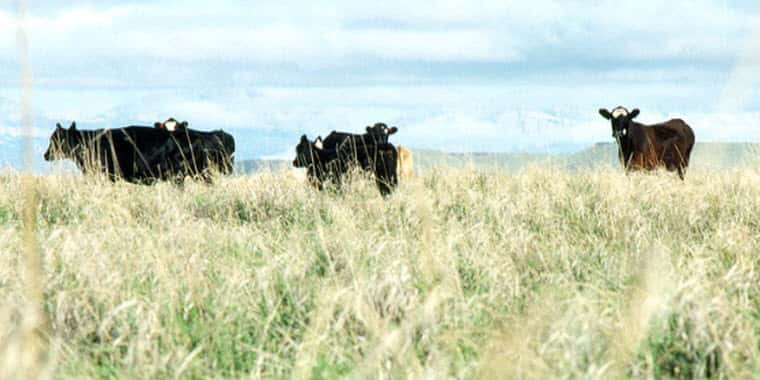Analysis of results from a 2017 South Dakota farmer survey reveals that cattlemen tend to be more land conservation oriented than their grain farming counterparts. This is positive news for an industry that can sometimes be viewed through a negative lens in an environmental context.
Survey results found that livestock producers were more likely to practice conservation agriculture practices, defined as no till or strip till (NTST) farming, a diverse crop rotation of more than two crops, and the use of cover crops. Compared to their non-cattle counterparts, cattlemen were 29{4c92fa2179cbca4bed3bb0c6c6ce267033d9d158a5f4060fb03bde3d74c11c2b} more likely to adopt NTST and 41{4c92fa2179cbca4bed3bb0c6c6ce267033d9d158a5f4060fb03bde3d74c11c2b} more likely to adopt a diverse crop rotation or use cover crops.
However, there are some caveats to these results. Farmers on NTST tend to farm more on highly erodible land, which also tends to be good cow country as well, so the two could be linked together. A diverse crop rotation of more than two crops also leads to more hay acres. Since hay is primarily used as cattle feed, it can be assumed that livestock producers would be more likely to raise their own hay as well, which would increase their cropping diversity. Livestock integration was high among cover crop adopters, with 64{4c92fa2179cbca4bed3bb0c6c6ce267033d9d158a5f4060fb03bde3d74c11c2b} of cover crop adopters using their cover crops for grazing. The percentage was higher among farmers who used cover crops and had cattle, with 97.5{4c92fa2179cbca4bed3bb0c6c6ce267033d9d158a5f4060fb03bde3d74c11c2b} of them grazing cover crops. There is already enough evidence on the profitability of cover crops and livestock integration in South Dakota.
Regardless of the reason for adoption, it is evident that farmers who are also cattlemen are adopting conservation practices at a higher rate than those without cattle. Conservation practices are promoted as key to soil health, reduced soil erosion, improved water quality, and reduced pest pressure and chemical use, while ensuring farm profitability long-term. Thus, adoption of conservation practices has on- farm benefits for the producer and off- farm benefits for the community and the public. These are all positive environmental aspects of agriculture that seem to coincide with cattlemen, while also making an economic impact in South Dakota while improving diversity on the state farms.
Livestock producers and crop producers who integrate livestock are adopting sustainable management practices with positive implications on environment, soil health, and economy. These are the aspects often overlooked in the current debate on “lab meat (tissue culture beef produced using cells)” and or “clean meat (plant based meat substitute)”. These alternatives for traditional meat production are promoted with the objective to disrupt the traditional meat industry and address environmental issues associated with animal agriculture. However, South Dakota cattlemen are already adopting sustainable production practices. So, tip your hat to our state’s cattlemen for all the benefits they bring.
###
Written collaboratively by Allen Deutz (Graduate Research Assistant) and Deepthi Kolady (Assistant Professor).
SDSU iGrow.org




